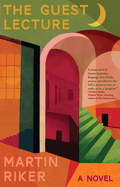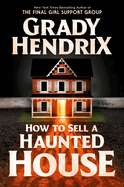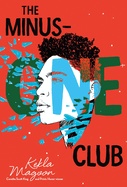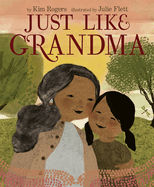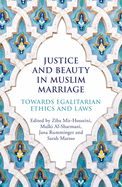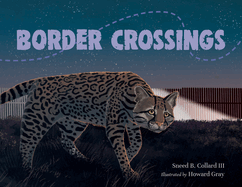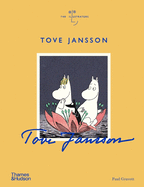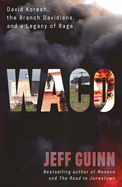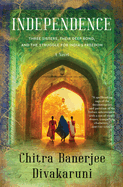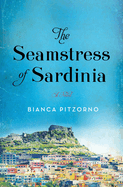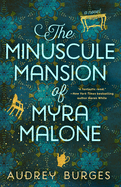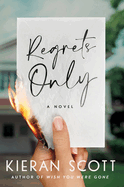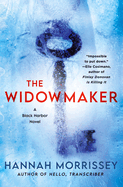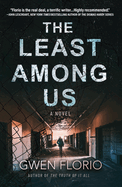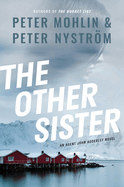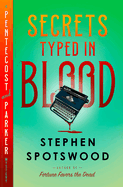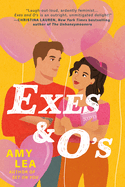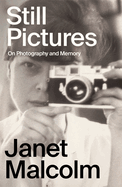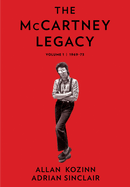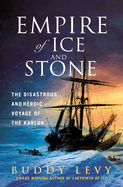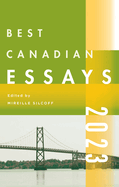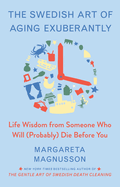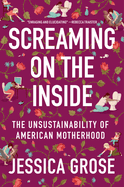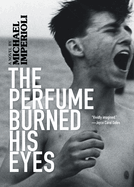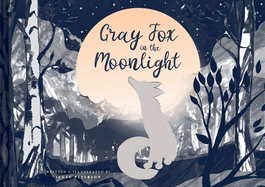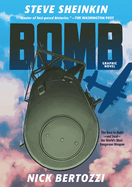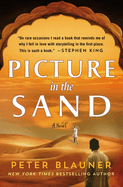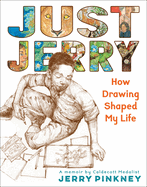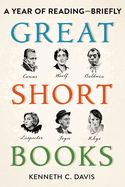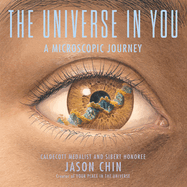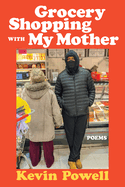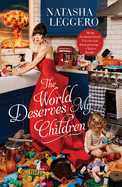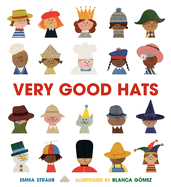Friday, January 27, 2023
Among this week's reviews: How to Sell a Haunted House demonstrates Grady Hendrix's "trademark dark comedy, while simultaneously spoofing and honoring classic horror tropes"; Martin Riker's "ingenious" novel The Guest Lecture stars a feminist economist who's anxious about delivering a speech on John Maynard Keynes, and enlists the help of the subject himself; and Kekla Magoon's "gritty and emotional" YA novel The Minus-One Club, in which a group of kids support each other after the loss of a loved one. Plus so many more!
In The Writer's Life, journalist Denise Crittendon discusses her debut novel, Where It Rains in Color, an Afrofuturistic science-fiction fantasy, plus the sci-fi writers who have most influenced her.
The Guest Lecture
by Martin Riker
The hyperactive brain of an insomniac in a state of high anxiety is some kind of place to be, as Martin Riker (Samuel Johnson's Eternal Return) demonstrates in The Guest Lecture. This ingenious novel captures the maelstrom inside the head of Abby, a feminist economist, who lies awake in a "dark hotel room somewhere in middle America" with her husband, Ed, who's "allergic to ambition," and her young daughter, Ali. Abby is petrified about the speech she has to give the next day on the economist John Maynard Keynes. That's not all she frets about: she also worries about how not having received tenure will affect her career and family. And she shares these fears with an imaginary confabulator: Keynes himself.
To help her get through her lecture, Keynes suggests a famous memorization technique: "Assign a different portion of the speech to each room of a building you know well, then... mentally move through this building." Abby proceeds from her dining room to the kitchen and elsewhere, but her thoughts wander from her lecture and into other aspects of her life--a notorious essay she once wrote to influential professors, a high school crush and more. Riker has a gift for making economics accessible, as when Abby states that Keynes thought the "financial catastrophe of 1930 would be a bother, a bad day in a long week." Fans of Joshua Cohen's The Netanyahus and other works that mix intellectual pyrotechnics with personal stories will savor this novel. --Michael Magras, freelance book reviewer
Discover: In this clever novel, a feminist economist calms her fears over a speech she has to give by conferring with the specter of the speech's subject: economist John Maynard Keynes.
Independence
by Chitra Banerjee Divakaruni
Chitra Banerjee Divakaruni explores the explosive effects of the Partition of India and its ramifications for one close-knit family of women in Independence, her stunning 13th novel for adults. Divakaruni (The Last Queen) focuses her story on the Hindu Ganguly family, who have long lived at peace in the quiet village of Ranipur with both Hindu and Muslim neighbors. But when the family--mother Bina, father Nabakumar and their three grown daughters--visit Calcutta in August 1946, their peaceful world is violently upended. Nabakumar, a doctor dedicated to serving indigent patients no matter their religion, is caught in the crossfire of the riots of Direct Action Day, and his death has immediate emotional and practical consequences for his family.
The narrative unfolds in alternating chapters, switching between the perspective of the three Ganguly daughters: eldest daughter Deepa, who falls in love with Raza, a young Muslim man; overlooked middle child Jamini, who swings between duty to her family and resentment at never being chosen; and Priya, the youngest, who burns with ambition to be a doctor like her father. Their choices in the wake of Nabakumar's death, including Deepa's love affair and Priya's determination to attend medical school, are shaped not only by their grief and newfound poverty but by the political turmoil in their nation. In wise, thoughtful prose, Divakaruni shows the chaos that results as India is divided by arbitrary borders, and citizens are forced to choose sides.
Lyrical and richly detailed, Independence explores the implications of its title not only for a country, but for the young women who must learn to deal with a perilous, exciting new world. --Katie Noah Gibson, blogger at Cakes, Tea and Dreams
Discover: Chitra Banerjee Divakaruni's stunning 13th novel explores the experiences of one Indian family during Partition in 1947.
The Seamstress of Sardinia
by Bianca Pitzorno
Bianca Pitzorno, an Italian writer known for her books for young readers, makes her adult debut in the U.S. with The Seamstress of Sardinia, a gently paced historical novel, perfect for fans of Adriana Trigiani. A young sartina--a seamstress who works daily in the homes of wealthy patrons--tells of her life's work, which began when she was only seven. She shares stories of learning her stitches from her grandmother and of her interactions with wealthy Sardinian families at the end of the 19th century.
Slow and sweet, The Seamstress of Sardinia spotlights in each chapter a different family the seamstress has worked for. Among them are the lawyer Proyera's family members, who appear to have new dresses straight from Paris but who are hiding a guilty secret; the spirited young marquise who hires the seamstress to make her wedding trousseau; and the American journalist who commissions a special corset. Each of these characters reveals more about the sartina's hopes and dreams and how, as she grows to adulthood and independence, she is determined to rise above her lowly status in the rigidly hierarchical Sardinian society.
The Seamstress of Sardinia--reminiscent of an older style of fiction, in which manners matter and lessons are learned--is sure to appeal to readers of Jane Austen or Louisa May Alcott. Based on the stories of Bianca Pitzorno's own grandmother, the novel captures a long-gone era with fresh eyes. Lovers of historical fiction are sure to find The Seamstress of Sardinia irresistible. --Jessica Howard, freelance book reviewer
Discover: In this sweet historical novel, a young seamstress faces many interesting challenges while working in wealthy Sardinian homes.
The Minuscule Mansion of Myra Malone
by Audrey Burges
Audrey Burges's The Minuscule Mansion of Myra Malone charmingly combines threads of magic, whimsy, romance, grief and loss in a debut novel of great feeling.
Readers meet 30-something Myra in 2015 in the Arizona mountains, where she lives in the attic of her late grandfather's cabin. She is regularly visited by her best friend Gwen, who forms Myra's main link with the outside world--along with the website by which hundreds of thousands of followers know the Mansion, Myra's life's work and greatest love. She inherited the large, highly detailed, finely wrought miniature (don't call it a dollhouse!) from her beloved step-grandmother, Trixie, who, along with Grampa Lou, taught her sewing, woodworking, painting and sculpting: "I know what gemstones look like water and what pen can draw the most convincing chain stitch on a washcloth that's too small to sew."
In flashbacks, the novel also reveals a very young Myra in her loving relationship with Trixie, until the older woman's tragic death on Myra's fifth birthday. Other chapters introduce a woman returning to her stately home in Virginia in the 1930s. And in 2015 Virginia, a young man named Alex discovers Myra's website, "The Minuscule Mansion of Myra Malone," and the miniature Mansion itself, which is, shockingly, a perfect match to the riverside family estate where he lives alone.
Burges carefully constructs her plot with as much quirkiness and love as any of Myra's miniatures. With sympathetic characters, high stakes and winning miniature chifforobes, The Minuscule Mansion of Myra Malone is dreamy, sweet and satisfying. --Julia Kastner, librarian and blogger at pagesofjulia
Discover: This captivating novel of miniature furniture and big themes braids strong friendships, romance, family ties and the importance of stepping outside of one's comfort zone.
Mystery & Thriller
Regrets Only
by Kieran Scott
Delving into the dark underbelly of the picturesque, fictional town of Piermont, Conn., Regrets Only by Kieran Scott is an entertaining domestic thriller. A glamorous group of moms struggles to recover after Ainsley Aames, the popular president of the Piermont Elementary parent association, tumbles to her death from the deck of her mansion. One of the moms might be the murderer, since each had a complex relationship with the enigmatic Ainsley. Alternating among the narratives of three characters, Regrets Only offers readers multiple intriguing storylines that enhance the mystery at the novel's heart.
Paige Lancaster, a talented but drama-prone writer for a Hollywood TV series, grew up in Piermont and has returned with her young daughter, Izzy, after an embarrassing career implosion sent her fleeing back east. Paige is intimidated by the perfectly turned-out women who run the parent association at Izzy's school but decides to volunteer in the hope that she and her daughter can assimilate into their new community. After Ainsley is found dead, Paige decides to lean on her experience as the writer of a popular TV detective series to investigate the crime.
Scott, an acclaimed writer of teen fiction (Pretty Fierce) and a previous adult thriller (Wish You Were Gone), packs Regrets Only with suspense. Paige's secretive past and the shocking reason she fled the West Coast loom large as the murder investigation takes an unexpected turn and the full extent of "what happened in L.A." comes back to haunt her. --Shahina Piyarali, reviewer
Discover: Set in a picturesque Connecticut town, this entertaining domestic thriller with an irresistible dash of romance follows a Hollywood TV writer struggling to escape her past.
The Widowmaker
by Hannah Morrissey
Everything is somehow related even when it seems it shouldn't be, as Hannah Morrissey (Hello, Transcriber) skillfully depicts in The Widowmaker, her intriguing second novel set in the gritty, uncompromising town of Black Harbor, Wisc. Working with a decidedly noir template, Morrissey sculpts a fascinating plot that takes circuitous routes to reach an unexpected, but believable, finale. Goth photographer Morgan Mori reluctantly returns to her hometown of Black Harbor. Her search for work leads her to spend a day and part of the night photographing the wealthy Reynolds family, who annually chronicle their lavish holiday gathering. The Reynolds' wealth contrasts sharply with the general atmosphere of the economically depressed town where empty storefronts and drug dealers are the norm. The family has also endured 20 years of speculation over the disappearance of business mogul Clive Reynolds in his Porsche 930 Turbo, also known as "the Widowmaker." This gossip fodder reaches a fever pitch when Clive's Porsche is found submerged in a lake. The Widowmaker takes another turn as newly promoted detective Ryan Hudson deals with grief and guilt when his former partner is murdered during a convenience store robbery.
Morrissey keeps the plot tight as she moves it in different directions while simultaneously delving into the characters' motives and backstories, including the abusive backgrounds of both Morgan and Ryan--which have shaped their personalities and which they shield from others--and their suspicious natures. Morgan's camera lens allows her to distance herself while Ryan filters his remoteness through police work. --Oline H. Cogdill, freelance reviewer
Discover: In this fascinating thriller, an economically depressed town provides the sturdy background for a goth photographer and a police detective who are drawn into a murder and a 20-year disappearance.
The Least Among Us
by Gwen Florio
Stress, both personal and professional, rises to an all-time high for public defender Julia Geary in The Least Among Us, the second installment in the Julia Geary Legal Thriller series by Gwen Florio (The Truth of It All). Professionally, Julia is handling her first murder case; it involves one of her favorite clients, Ray Belmar, a homeless man accused of killing another homeless man. But Julia's boss doesn't trust her to be in charge, so he assigns a hotshot attorney to join the case; plus, Julia is saddled with an arrogant, know-it-all intern. Personally, Julia's boyfriend, Dom Parrish, ends their relationship because his teenage daughter walked in on the couple having sex. Dom fears his ex-wife will use this incident in their custody battle. Julia and her five-year-old son, Calvin, must find a new place to live: her mother-in-law, in whose home they have stayed since her husband was killed in Iraq, plans to marry. These pressures strain Julia but also galvanize her to work harder. When other homeless people mysteriously die, Julia takes a closer look at the homeless population and how they are treated by the police and the general citizenry of the small town of Duck Creek, located in an unnamed state.
The appealing, intelligent Julia taps into newfound ambition for her legal career and activism for the homeless. Julia's strong relationship with her mother-in-law gives balance to her life. Florio skillfully merges an emotional domestic story with an engrossing legal thriller in The Least Among Us, while delving into issues around the exploitation of the homeless. --Oline H. Cogdill, freelance reviewer
Discover: A lawyer battles personal and professional stress in this energetic novel that combines an emotional domestic story and an engrossing legal thriller.
The Other Sister: An Agent John Adderley Novel
by Peter Mohlin and Peter Nyström, transl. by Ian Giles
Talk about multitasking: Karlstad police detective Fredrik Adamsson--an alias created for former FBI agent John Adderley by the Swedish authorities at the behest of the bureau's witness protection program--is hunting for a killer while being hunted himself. The Other Sister, the follow-up to The Bucket List, may have a knotty plot, but the story is so clearly laid out by Peter Mohlin and Peter Nyström that readers can devote their mental energies to the thriller's vexing central question: Does John Adderley deserve to get away? The novel, translated from the Swedish by Ian Giles, toggles between John's point of view and that of 29-year-old Alicia Bjelke, chief technology officer of Raw, a successful dating platform that she cofounded with her sister, the glamorous Stella. Alicia is a whip-smart developer but remains in Stella's shadow, in part due to the facial scarring that Alicia suffered as a child. When Stella turns up murdered at a coffee roastery, John is put in charge of the case.
As The Other Sister proceeds, the "right" thing to do becomes murkier; as John admits to himself, he "was deploying his own homemade moral philosophy, which seemed to take it for granted that most things were allowed if you were trying to secure your own liberty and survival." The novel's morality-play aspect is expertly balanced with mainstays of the thriller genre, culminating in a hair-raising twist. It also contains one of the cleverest maneuverings of a dead body into the trunk of a car that readers are likely to encounter. --Nell Beram, author and freelance writer
Discover: In this follow-up to The Bucket List, the murder of a dating platform cofounder in a Karlstad coffee roastery sets up a top-notch thriller that harbors intriguingly thorny moral questions.
Secrets Typed in Blood
by Stephen Spotswood
In its mid-century heyday, detective fiction was a man's game. But the gumshoes are an infirm older woman and a brassy young lesbian in Stephen Spotswood's incessantly delightful Pentecost and Parker series (Fortune Favors the Dead). Beyond fleshing out character, these traits help drive Secrets Typed in Blood, the third book in the series that subverts every detective fiction trope it introduces.
It's 1947 as the novel opens, and Brooklyn's Pentecost Investigations receives a visit from a potential new client, who announces: "Somebody is stealing my murders." Holly Quick, a writer of crime fiction, explains that stories she published in Strange Crime magazine seem to have been used as blueprints for three unsolved murders: the real-life killing methods are uncannily like the ones she concocted for the magazine. Esteemed private detective Lillian Pentecost, whose multiple sclerosis hinders her body but not her brain, and her assistant, Willowjean "Will" Parker, take the case, determined to find the link among the three victims before the killer strikes again.
Secrets Typed in Blood is Parker's frequently hilarious after-the-fact write-up of the case. She calls to mind Sam Spade's gay sister when she notes that someone's skimpy outfit "was definitely not meant for the late-January cold, but if there was a goose bump on her, I couldn't find it." As for the mystery itself, at one point Holly Quick says of writing crime fiction: "Clues are the hardest part of my job. Figuring out how to slip them in." Spotswood has definitely figured this out.--Nell Beram, author and freelance writer
Discover: In this addition to the incessantly delightful Pentecost and Parker mystery series, the Brooklyn-based female PIs work with a crime writer whose fiction seems to be a blueprint for murder.
Science Fiction & Fantasy
How to Sell a Haunted House
by Grady Hendrix
How to Sell a Haunted House by horror novelist Grady Hendrix (The Final Girl Support Group; We Sold Our Souls; Horrorstör) is a hilarious, horrifying and surprisingly tender take on a good old-fashioned haunted house tale. After her loving parents die suddenly in a car wreck, single mom Louise knows she has to return to Charleston. But going home means facing her deadbeat younger brother, Mark, who's hated her for years; her eccentric extended family; and some terrifying childhood memories that she prefers to keep buried. It also means having to go through the hoards of creepy puppets her mother made. Although Louise and Mark are eager to sell the place, even if it means working together, the house and all its current residents, marionettes and ghosts alike, have other plans.
As in his other horror novels, Hendrix imbues How to Sell a Haunted House with his trademark dark comedy, simultaneously spoofing and honoring classic horror tropes. Readers will both snort over Louise's Southern, hyper-Christian aunt turned demon hunter and cringe at the visceral horror of needles slipping into eyeballs. But more than gross-out horror, this novel captures the creeping, eerie atmosphere of classic haunted house stories--from the blue flickering lights of televisions left on in empty rooms to the spine-chilling scraping noises of things that go bump in the night. Even more than Hendrix's previous works, this novel finds the heart-wrenching core of its central trope, developing its characters to serve as emotional support beams for a story structured on family legacies of both loss and love. --Alice Martin, freelance writer and editor
Discover: With all the gruesome details to satisfy a horror fan, plus laughs and poignancy to charm those who avoid unnecessary frights, How to Sell a Haunted House offers entertainment for all.
Romance
Exes and O's
by Amy Lea
Amy Lea (Set on You) pairs a playboy and a hopeless romantic in Exes and O's, a funny, restorative "room-mance." Tara, a nurse in a neonatal intensive care unit and bookish social media influencer, is recovering from a broken engagement when she moves in with Trevor, her future brother-in-law's best friend. This firefighter, hot as he is, is not at all interested in the kind of relationship Tara prefers--one that leads to Happily Ever After. Encouraged by her grandmother's recent second-chance romance with a man who was her childhood sweetheart, Tara embarks on a quest to live out that much-loved romance trope herself. She announces to her followers that she's going to reach out to each of her exes to see if the secret to her happily-ever-after is in her past. With help from her sister, her best friend and the Internet, Tara catches up with her exes--with hilarious and disastrous results.
Lea adeptly walks the line with this plot: she sends one of her characters on dates with several men but keeps the focus on her central couple. She tells Exes and O's entirely from Tara's perspective, allowing Trevor's feelings to remain mostly hidden, while Tara stumbles through her past relationships and tries to resist the pull she feels to her roommate. Seamlessly, Lea employs several classic tropes to great effect, delivering two lovable characters in a captivating romance sure to lift even the most downtrodden of hearts. This romantic comedy is a great fit for fans of Alisha Rai and Christina Lauren. --Suzanne Krohn, librarian and freelance reviewer
Discover: In this romantic comedy, an avid romance reader goes on dates with her exes in an attempt to find her happily-ever-after, only to discover it in her own apartment.
Biography & Memoir
Still Pictures: On Photography and Memory
by Janet Malcolm
A writer notorious for the quote "Every journalist who is not too stupid or too full of himself to notice what is going on knows that what he does is morally indefensible" was bound to produce an opinionated memoir. That's what readers get in Still Pictures by Janet Malcolm (Nobody's Looking at You), who died in 2021. Malcolm's daughter, Anne, notes that "it seems entirely fitting... that when my mother turned her hand to a kind of memoir, it should be built around a series of images." In this book, Malcolm, a former photography critic for the New Yorker and an accomplished photographer, uses family pictures and other images to write about her upbringing and career, and she doles out plenty of the biting and entertaining wit one would expect from a writer of her caliber.
In an early chapter, Malcolm shares a photograph of herself, almost five years old, on a train with her parents as they leave Prague in 1939. This is one of many essays about Czech Jewish refugees like her family who fled the Nazis and came to New York. Other chapters focus on her maternal grandmother, Klara, who "looks like a generic mother figure in a child-rearing manual"; her all-girls junior high school; her Saturdays at the movie house; her early crushes; and much more. Even in a memoir, Malcolm displays her gift for the cutting remark, as when she admires the "toughness and self-containment" of today's young women before adding: "Of course, beneath the surface, they are as pathetic as everyone else." The result is a caustic, idiosyncratic trip through a singular life of letters. --Michael Magras, freelance book reviewer
Discover: In this final work, Janet Malcolm, the late New Yorker journalist and an accomplished photographer, uses photographs to craft a memoir of her childhood and career.
The McCartney Legacy: Volume 1: 1969-73
by Allan Kozinn and Adrian Sinclair
Allan Kozinn and Adrian Sinclair explain that The McCartney Legacy: Volume 1: 1969-73 began as a sessionography of Paul McCartney's music after the Beatles, but they ended up creating a biography "by mistake." Some mistake! This 720-page book covers just five years in McCartney's life: his period of rebirth and reinvention between 1969 and 1973. During this time, the Beatles broke up and, in 1971, McCartney formed Wings. In five years, he released five albums. This fascinating, deeply detailed and comprehensive look at McCartney's post-Beatles work and his struggles to create it also examines the alcohol-fueled depression he suffered after the Beatles broke up, exacerbated by "a year of business disputes that had been a live third rail within the band's dynamic." Newly wed to Linda Eastman, McCartney kept writing and recording at her encouragement. The love song "Maybe I'm Amazed" was written for her and was the first single released from his debut solo album, McCartney.
McCartney wasn't interviewed for this bio, but Kozinn interviewed him numerous times over the years, and the two authors use thousands of radio and TV q&as and tens of thousands of print interviews. They also talked to hundreds of people in the music business who worked closely with McCartney. Though countless books have been written about the Beatles and their individual members, most focus on the group's decade-long life span rather than the productive five decades that followed the break-up.
The McCartney Legacy is a great achievement, extensively researched to correct errors that have become legend, and paints a fascinating portrait of an artist re-creating himself. --Kevin Howell, independent reviewer and marketing consultant
Discover: This massive 750-page first volume in a series that will chronicle Paul McCartney's life covers the five years in which he found his voice and career, separate from the Beatles.
History
Waco: David Koresh, the Branch Davidians, and a Legacy of Rage
by Jeff Guinn
Jeff Guinn (Manson; The Road to Jonestown) is a meticulous researcher with the exceptional writing skills to gather those details into riveting works of narrative nonfiction. With Waco: David Koresh, the Branch Davidians, and a Legacy of Rage, Guinn first touches down on the tragic February date in 1993 when federal agents began a seven-week siege on the Branch Davidian compound near Waco, Tex., before stepping back to the 19th-century roots of the religious sect, to chart its progress toward the charismatic leadership of one Vernon Wayne Howell, also known as David Koresh.
The catalysts for the standoff at Waco are varied and complex, which is where Guinn's sober attention to detail becomes invaluable to readers. The U.S. government had amassed numerous indictments against Koresh and his followers, including an illegal stockpile of automatic weapons and an ongoing series of sex crimes. The bureaus involved, however, may have been hungry for a win in the public eye, especially the ATF (Alcohol, Tobacco and Firearms), whose largely good reputation plummeted after a violent shootout at Ruby Ridge, Idaho, the previous year. Guinn also makes clear that crucial to this mix is the Branch Davidian preoccupation with the End of Days, particularly their faith that their own deaths would not be permanent once the Lamb of God returned.
With copious citations regarding his interviews with those involved and access to documentation as well as secondary sources, Guinn brings necessary clarity to a horrifically explosive situation--one still reverberating throughout the country 30 years later. --Dave Wheeler, associate editor, Shelf Awareness
Discover: Through meticulous research and riveting narrative nonfiction, Jeff Guinn pieces together what happened during one religious sect's final standoff with American federal agents.
Empire of Ice and Stone: The Disastrous and Heroic Voyage of the Karluk
by Buddy Levy
Fresh off his previous book about Arctic survival, Buddy Levy (Labyrinth of Ice) returns with another bone-chilling polar history in Empire of Ice and Stone, which focuses on the Karluk disaster. In 1913, Vilhjalmur Stefansson created the Canadian Arctic Expedition and hired renowned master mariner Captain Robert "Bob" Bartlett to pilot the Karluk, which carried an assortment of crew members and scientists. Bartlett, "ranked among the Olympians of polar exploration," was the antithesis of the "chameleon-like" and fame-seeking Stefansson, according to Levy; this dichotomy of character would ultimately define the disaster.
The Karluk departed British Columbia for the Arctic Ocean in June 1913, but after approximately six weeks, giant ice floes entrapped the wooden-hulled ship off Alaska. So began the ship's dangerous drift westward away from land, precipitating Stefansson's craven decision several months later to abandon the expedition for an ostensible caribou hunt. Making it to back to civilization, Stefansson faced tough questions about leaving the Karluk to its fate and would for the rest of his life. The hero here is Bartlett, forced into de facto leadership of the expedition and who undertook a mind-boggling journey for hundreds of miles over ice and land to rescue the shipwrecked survivors, left behind on the forbidding Wrangel Island, "an empire of ice and stone." Levy is never better than when conjuring the deep cold of the Arctic or capturing the elemental shades of suffering human beings can endure. Readers who love a well-told Arctic tale of adventure and courage should add Empire of Ice and Stone to their winter reading. --Peggy Kurkowski, book reviewer and copywriter in Denver
Discover: Buddy Levy tells the story of the disastrous 1913 Karluk Arctic expedition in vivid and visceral detail and pulls no punches when assigning blame for the deaths of 11 of its crew members.
Social Science
Justice and Beauty in Muslim Marriage: Towards Egalitarian Ethics and Laws
by Ziba Mir-Hosseini et al., editors
A groundbreaking collection of essays challenging the "patriarchal terrain of Islam," Justice and Beauty in Muslim Marriage: Towards Egalitarian Ethics and Laws, edited by Ziba Mir-Hosseini, Mulki Al-Sharmani, Jana Rumminger and Sarah Marsso, advocates persuasively for a dynamic, feminist approach to interpreting the Qur'an and other sources of divine guidance relating to women's rights within marriage. A diverse cohort of authors, professors and prominent feminists--drawing on scholarly reviews of the Qur'an, the Hadith (words and actions of Prophet Muhammad) and tradition and legal theory--contend that the core Qur'anic principles of justice and beauty within marriage, as manifested by love, compassion and mutual respect, are missing from the discourse of political leaders, preachers and jurists. Instead, they distort religion to justify misogyny and the subordination of women--in direct contradiction to the spirit of Islam.
In her essay "Reading the Qur'an Through Women's Experiences," Indonesian scholar Nur Rofiah lays the groundwork for a gender-sensitive, holistic reading of the Qur'an, centering women's experiences as a lens for interpreting the sacred text and honoring its underlying intent. Egyptian-German researcher Yasmin Amin's essay in the section titled "Lessons from the Prophet" reflects on the mutual respect and love that characterized the Prophet's relationship with his wife Khadija, a marriage model that Amin recommends resurrecting to improve the lived realities of contemporary Muslim women.
Justice and Beauty in Muslim Marriage is nothing short of revolutionary in demonstrating the compatibility of feminism within Islam and offers readers a thought-provoking immersion into the fledgling women's rights movement finding its wings across the Muslim world. --Shahina Piyarali, reviewer
Discover: This groundbreaking work of scholarship examines the Qur'an and related texts through a holistic, feminist lens with the goal of promoting gender equality within Muslim marriages.
Essays & Criticism
Best Canadian Essays 2023
by Mireille Silcoff, editor
Best Canadian Essays 2023 blends memoir and reportage to illuminate such topics as racial identity and the social effects of Covid-19. Editor Mireille Silcoff (Urban Animals) selects 16 entries that showcase authors "working their way through a skein of ideas and experience, even conflicting, to come to some understanding." Ethnic diversity is a potent seam. Jalamuddin Aram agonizes over the resurgence of the Taliban as friends evacuate his native Afghanistan; Chafic LaRochelle wonders what his father endured during Lebanon's civil war; Kunal Chaudhary decries the criminalization of majority ethnic communities; and Christopher Cheung exposes how journalism ignores people of color. The question of who can claim Indigenous ancestry underpins Michelle Good's indignant essay about "Play Indians" and Emma Gilchrist's introspective search for her birth father. Another major theme is loneliness, often exacerbated by illness, as in Sharon Butala's heartrending "On Ageing Alone." Kathy Page describes the "new grey passport" Parkinson's disease issued her for "the kingdom of the sick," while Sarmishta Subramanian examines the pandemic's implications for friendships.
Youth culture, Twitter politics, overworking and new motherhood are additional subjects. Allan Stratton's controversial piece challenges the radical fringe of trans rights activism. In the delightful odd one out, the McDonald's Filet-O-Fish plays a nostalgic role for Jane Hu. Best of all is M.E. Rogan's "Quitting America," which is about renouncing U.S. citizenship during Trump's presidency.
These bold, timely essays present strong personalities and cutting-edge points of view. And as Silcoff asserts, "a frontier... is the best place--for a conversation between sides to begin." --Rebecca Foster, freelance reviewer, proofreader and blogger at Bookish Beck
Discover: These 16 bold, timely essays blend memoir and reportage to ruminate on such subjects as family, racial identity and the social effects of Covid-19.
Psychology & Self-Help
The Swedish Art of Aging Exuberantly: Life Wisdom from Someone Who Will (Probably) Die Before You
by Margareta Magnusson
In The Gentle Art of Swedish Death Cleaning, Margareta Magnusson made a case for paring down one's belongings before infirmity makes the job impossible. "Remember, your kids and your other loved ones may want some of your stuff when you are gone--not all of your stuff," she reminds readers in her amiable and enlightening follow-up, the essay collectionThe Swedish Art of Aging Exuberantly: Life Wisdom from Someone Who Will (Probably) Die Before You.
Less single-minded than its predecessor, the book comprises, as Magnusson puts it, "discoveries I have made about becoming very old." The essays are prompted by reminiscences from a long life during which Magnusson, now a widowed octogenarian Stockholmer, and her husband, whose job required relocation, raised five kids on three continents; meanwhile, she pursued her art. (Her thumbnail vignettes speckle the essays.) Though The Swedish Art of Aging Exuberantly has a self-help-slash-advice-book aspect--most of the essays have imperative titles, such as "Eat Chocolate" and "Wear Stripes"--overall the offering has an autobiographical feel, including as it does Magnusson's recollections of attending a Chinese wedding while living in Singapore, being introduced to Halloween while living in the United States and so on. Her memories are springboards for insights: "I must admit I have not been open-minded all the time. I just wish I had." And it is with her customary plainspokenness that she shares such thoughts, adding her reason for writing such a short book: "Old people don't want to read four hundred pages--they may not live that long." --Nell Beram, author and freelance writer
Discover: The octogenarian author of The Gentle Art of Swedish Death Cleaning returns with an amiable and enlightening book of essays full of reminiscences, advice and her customary plainspokenness.
Parenting & Family
Screaming on the Inside: The Unsustainability of American Motherhood
by Jessica Grose
There is no shortage of books devoted to the topic of parenting or, more specifically, motherhood. This abundance reveals the general insecurity many mothers feel around what should perhaps be the most natural of relationships. Rather than adding more fuel to that fire, Jessica Grose offers a different kind of parenting book. Screaming on the Inside is a compelling counterpoint to the social media-fication of motherhood. Grose systematically unravels decades of history, as well as the cultural and media pressures that have combined to create an unrealistic image of the "perfect mother," arguing that "even if you consciously reject this litany of demands, they manage to worm their way into you."
The book explores such weighty issues as identity and work in seven substantial chapters, each relying on a depth of research (with endnotes for those wanting more information) usually found in more academic work, while still maintaining an open and accessible tone. Grose (Soulmates; Sad Desk Salad; Home Economics) concludes by inviting readers to consider the possibility of making meaningful change and offers examples of parents who have done exactly that. Throughout the book, she draws on her own experiences as a mother (often recounting what she describes as her own failures) and only occasionally struggles to maintain that difficult blend of conversational and scholarly. Ultimately, she suggests that "accepting and sitting with ambivalence, our own and other mothers', might be the most essential takeaway" from her book, urging readers to set aside any version of perfection and listen to themselves instead. --Sara Beth West, freelance reviewer and librarian
Discover: Screaming on the Inside is a compelling counterpoint to the social media-fication of motherhood, unraveling the cultural pressures that work to create an unrealistic image of the "perfect mother."
Art & Photography
Tove Jansson: The Illustrators
by Paul Gravett
Paul Gravett's Tove Jansson, the potted biography of the author best known for the Moomins, showcases the development of her artistic style and literary themes. Born at the start of World War I into a family of artists (her father was a sculptor; her mother, a graphic designer; her brother, Lars, a collaborator on her comics), Jansson wanted to paint but had limited opportunities as a woman. After art college, she undertook commissions and freelance work. The first Moomins book was published in 1945; the second, Comet in Moominland, arose from the fear inspired by air raids. She landed her first permanent salaried job at age 37, a daily comic strip for Associated Newspapers.
Tove Jansson contains a wealth of illustrations--more than 100, so nearly one per page--as well as photographs and high-quality reproductions, many in color and some in black and white, of Jansson's comics, paintings and book covers. Later in the Moomins series, she adopted line drawings in thick layers of pen, achieving a "rich range of shading." Gravett (Mangasia; Comics Art) also probes the autobiographical influences on Jansson's work, which are particularly clear in her 15 books for adults. She lived with her female partner, Tuulikki Pietilä, for 45 years but, because homosexuality was illegal in Finland until 1971, had to be covert about relationships with women. She inserted anti-Nazi sentiments into her cartoons and her work is often melancholic, a response to bereavements.
A sensitive portrayal of Finland's most widely translated author, this itself is a work of art. --Rebecca Foster, freelance reviewer, proofreader and blogger at Bookish Beck
Discover: This sensitive, short biography of the author best known for the Moomins books showcases the development of her artistic style.
Now in Paperback
The Perfume Burned His Eyes
by Michael Imperioli
In his debut novel, The Perfume Burned His Eyes, Emmy-winning actor and screenwriter Michael Imperioli (Woke Up this Morning, with Steve Schirripa) takes readers back to the era of 1970s rock-'n'-roll in New York City, conjuring a vivid, gritty portrait of the city. Narrator Matthew's grieving mother pulls him from his comfortable childhood home in Queens after he loses his father and grandfather and moves them to a posh new apartment in Manhattan. Uprooted, Matthew is only a few miles from his childhood home but leagues away from his pre-adolescent innocence. His life is swept up in a whirlwind of intrigue when he meets his neighbor, rock star Lou Reed: "He looked like the junkies I would see hanging out by the Roosevelt Avenue subway station hustling change for a token or a shot. But I was wrong." Matthew, entranced by Reed's alternative lifestyle, follows him around the city and entangles himself in the musician's unpredictable practices.
While his affection deepens for this unconventional father figure, he discovers his romantic desires. Veronica, whom Matthew notices on his first day at the Hobart School, fascinates him with her curious interests and maturity that's well beyond her age. However, Reed and Veronica lead Matthew into intensely perturbing situations in this unconventional coming-of-age narrative, with the 1970s Manhattan landscape offering an endless array of excitement and trouble. Matthew's wit, quickly fading innocence and deeply troubled mind will create strong empathy in readers. --Clara Newton, freelance reviewer
Discover: A coming-of-age story following a boy and his rock-star mentor captures the chaos of growing up and finding--and losing--the people you love.
Children's & Young Adult
The Minus-One Club
by Kekla Magoon
In this gritty and emotional young adult novel, Kekla Magoon (The Season of Styx Malone; X: A Novel), four-time Coretta Scott King Honor recipient and winner of the 2010 John Steptoe Award for New Talent, gives young adults another heartfelt, sincere work of contemporary realism.
Fifteen-year-old Kermit Sanders lost his older sister, Sheila, when "an intoxicated pickup driver... crossed a double yellow line and smashed" into her car. It has been a week since the accident and everything reminds him of her. When he returns to school, he finds an anonymous note in his locker with an invitation to meet in the art room. The letter is mysteriously signed "-1." Kermit, uncertain of what he's getting himself into, goes and is met with a group of his schoolmates who call themselves the "Minus-One Club." Although they're in different social groups, they all have one thing in common: the tragic loss of someone they loved.
The Minus-One Club is broken into short, first-person chapters that alternate between present day, the past and Kermit's dreams. Magoon uses Kermit's nights to create fantastical, other-worldly settings and experiences where the teen can connect with his sister, work through his feelings of grief and consider his sexuality. Although the book is a quick and accessible read, it covers heavy topics readers may find emotionally demanding. Magoon thoughtfully includes themes relating to depression, suicide, identity and religious expression as she compassionately builds Kermit's complicated, sensitive inner life and depicts the various ways people might respond to the loss of a loved one. --Natasha Harris, freelance reviewer
Discover: In award-winning author Kekla Magoon's superbly written coming-of-age novel, a teenager tries to navigate life after the death of his sister.
Just Like Grandma
by Kim Rogers, illus. by Julie Flett
Wichita and Affiliated Tribes author Kim Rogers's first picture book, Just Like Grandma, beautifully portrays a supportive, inspiring grandparent-grandchild relationship. Joy-suffused art by Swampy Cree and Red River Métis illustrator Julie Flett (We All Play) accompanies Rogers's accessible free verse.
"Becca watches/ Grandma bead and bead/ buckskin moccasins"; Grandma passes her the needle when she asks to try. The Indigenous child and woman sit on the steps of their gray house and bead until "Grandpa calls them in for corn soup." When Grandma paints a colorful sunrise, Becca says, "Let me try." Grandma teaches her brushstrokes and "together they paint the most spectacular sunrise/ anyone has ever painted." The refrain "Becca wants to be/ just like Grandma" repeats each time she sees her role model practicing a different skill. Rogers brilliantly reverses the role model narrative when Grandma spots Becca practicing for basketball tryouts. Now "Grandma wants to be/ just like Becca," and Becca teaches Grandma the plays she's been practicing.
Rogers affords children their rightful place as both legacy and leaders in this cyclical love letter to family and tradition. The narrative poem mirrors Grandma and Becca and sings with the sense of comfort and belonging that can come from family. Flett's collage-like pastel, pencil and digital illustrations capture a gorgeous sense of movement as shawl fringe swishes, skirts swirl and Grandma's hair blows in the wind. The characters radiate joy in their activities and companionship. This affirming, sunlit story is equally accessible to families with grandparents as primary or secondary caregivers and celebrates the richness of Indigenous life. --Jaclyn Fulwood, youth experience manager, Dayton Metro Library
Discover: This joyful picture book follows an Indigenous child as she works at emulating her grandmother, only to learn in a heartwarming twist that her grandmother looks up to her, too.
Border Crossings
by Sneed B. Collard III, illus. by Howard Gray
Author Sneed B. Collard III (Waiting for a Warbler) and illustrator Howard Gray (Land of Giants) present with conviction and a keen reverence for biodiversity the threat to animals and plants posed by the U.S./Mexico border wall.
Readers first meet a male ocelot, padding across the ground in the dark of night. He heads toward Mexico and meets a long wall, one that "smells alien." A car approaches and he runs away, Collard noting that the creature will not successfully find a mate this year. This border wall runs nearly 2,000 miles between the United States and Mexico, threatening the survival of creatures portrayed by Gray, including pronghorn, javelinas and pygmy-owls. Gray brings intriguing perspectives--in the opening spread, readers see from the ground the ocelot's paws as it creeps silently along, with a backdrop of stars--and it is with precision that he captures these creatures as well as the flora and fauna of the border lands.
Collard's use of alliteration ("padded paws silently step across pebbled ground") draws in readers. He refers to the wall as an "ugly scar," and Gray depicts in several spreads its jagged edges interrupting sky and land. His use of panels on many spreads accelerates the action, and he captures light and shadow in especially evocative ways. The book closes with a glossary, tips for further reading and an author's note that provides more details, stressing the only way to protect the region and its treasures: "by letting others know that we care." --Julie Danielson, reviewer
Discover: Border Crossings is a persuasive argument against the U.S./Mexico border wall that dramatizes for young readers the ways in which the wall threatens the breathtaking biodiversity of the region.
Gray Fox in the Moonlight
by Isaac Peterson
It may take readers of Gray Fox in the Moonlight, a handsome and haunting picture book from Isaac Peterson, a couple of sittings to notice how circumscribed its palette is. While the book's illustrations are created almost entirely with grays and purples shot through with white, the variation among the images, coupled with the austere poetry in every line of text, present a multifaceted and sumptuous nocturnal world.
Gray Fox in the Moonlight takes readers through a typical night in the life of the titular animal. "Gray Fox/ walks/ so lightly/ through the woods," the book begins. "The breeze/ moves slightly./ Autumn leaves fall." Soon the moon appears behind some trees, a pale orange orb seemingly "caught/ in the/ branches" and patterned with leaves. The moon and stars light Gray Fox's way as she approaches a river and examines her reflection. Moonlight also helps her follow a twisty path back to her den, "where/ her kits/ are/ dreaming." Gray Fox curls around them, moonlight-kissed feathery-leaved plants standing sentry.
Peterson's author bio suggests that the book's illustrations were created by hand, and for readers familiar with traditional photography techniques, the images may recall another technology-free art-making method: sun printing, which produces stark white shapes against blue-gray backdrops. (Might Peterson be approximating moon printing?) Gray Fox in the Moonlight is a book tied to no era, which perfectly suits a timeless hymn to the natural world and to parents' love for their children. --Nell Beram, freelance writer and YA author
Discover: This handsome and haunting picture book takes readers through a typical night in the life of the titular animal, during which the moon lights her path back to her kits.
Bomb: Graphic Novel
by Steve Sheinkin, illus. by Nick Bertozzi
Nick Bertozzi (Shackleton: Antarctic Odyssey) magnificently illustrates the graphic novel edition of Steve Sheinkin's riveting 2012 National Book Award finalist and Newbery Honor book, Bomb: The Race to Build--and Steal--the World's Most Dangerous Weapon, the true story behind the production of the atomic bomb.
Sheinkin's narrative begins in 1950 when FBI agents visit the Philadelphia home of the alleged Soviet spy Harry Gold. The ensuing interrogation of Gold forms the skeleton of the graphic novel as it moves between various historical episodes. In addition to the scientific masterminds behind the bomb's development, readers are introduced to anxious politicians, battle-hardened commandos, idealistic spies and even innocent civilians caught in the crossfire of warring nations. Sheinkin tells the story in tones that are triumphant, thrilling and, at times, heartbreaking.
Bomb skillfully employs the graphic novel form to make a complicated historical event both gripping and approachable. Bertozzi uses a palette of steely grays, blues, olive greens and earth tones to create a realistic World War II setting. His art, matched with Sheinkin's concise text and quotes from primary sources, creates a historically accurate and engrossing collaboration that is never dry or overly expository. Importantly, the creators never shy away from the human cost of scientific advancement: throughout the narrative, Sheinkin incorporates scenes in which the bomb's creators question the ethics of their actions, while Bertozzi's juxtaposing illustrations of life in Hiroshima and Nagasaki before and after the bomb's deployment are heartrending. Bomb, candidly told and arrestingly illustrated, offers an accessible way to learn about one of the most significant inventions in human history. --Cade Williams, freelance reviewer and junior reporter at DIG Boston
Discover: A captivating and complex graphic novel tells the story behind the production of the atomic bomb.
Shelf's January Stars
The Writer's Life
Reading with... Denise Crittendon
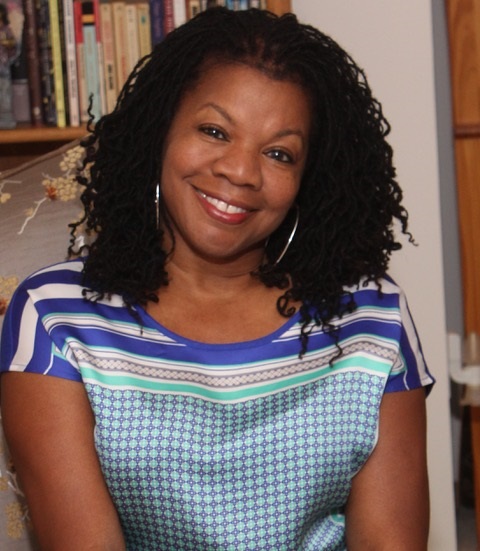 |
|
| photo: William Townley | |
Journalist Denise Crittendon has been a newspaper reporter, magazine editor, motivational speaker, ghostwriter and adjunct community college professor. As author of two self-help books for teens, the Detroit native relishes the peace and inspiration of long walks through tree-lined parks and woods, where she says her imagination is unleashed. Where It Rains in Color (Angry Robot, December 6, 2022), an Afrofuturistic sci-fi/fantasy, is her debut novel.
Handsell readers your book in 25 words or less:
She's the shimmering Black beauty of Swazembi. Until scars and phantom voices surface, leaving her with powers that shift her destiny and shock the galaxy.
On your nightstand now:
The Deep by sci-fi author Rivers Solomon. Considering the controversy about a Black actress starring in Disney's The Little Mermaid, this novel is pretty timely. Solomon tends to write passionate speculative fiction that incorporates the transatlantic slave trade. In The Deep, she offers an inventive twist on what happened to Africans who either jumped from ships during the Middle Passage or were thrown overboard due to illness.
Favorite book when you were a child:
The Shy Stegosaurus of Cricket Creek. I have no idea why this story intrigued me so much, but I just loved it. I can still picture myself curled up in my favorite hiding place in the corner of the family dining room, completely lost in this library book.
Your top five authors:
Octavia Butler--I'm amazed by her extraordinary vision and fascinating usage of the natural world for organic technology. In her Lilith's Brood series (Dawn, Adulthood Rites and Imago), the space vessel is an actual living being. Also, the aliens in this world can place sleeping humans inside biologically altered carnivorous plants, thereby prolonging their lives for centuries.
Toni Morrison--No one reflects on the hard road of African Americans quite like Morrison. She weaves it into pure magic.
Chimamanda Ngozi Adichie--Her insights and metaphors captivate me. Plus, I love delving into African culture, politics, history and lifestyles.
Isabel Allende--I have a great appreciation for magical realism and really enjoy her epic stories that often span several generations in one novel.
Ursula Le Guin--Whenever I read Le Guin, I feel like I'm looking through the eyes of a caring anthropologist. Her tales are engaging and thought-provoking. Earthsea will always be one of my favorite series.
Book you've faked reading:
The Old Man and the Sea by Ernest Hemingway. In fact, anything by Hemingway. Sorry, I'm not a fan.
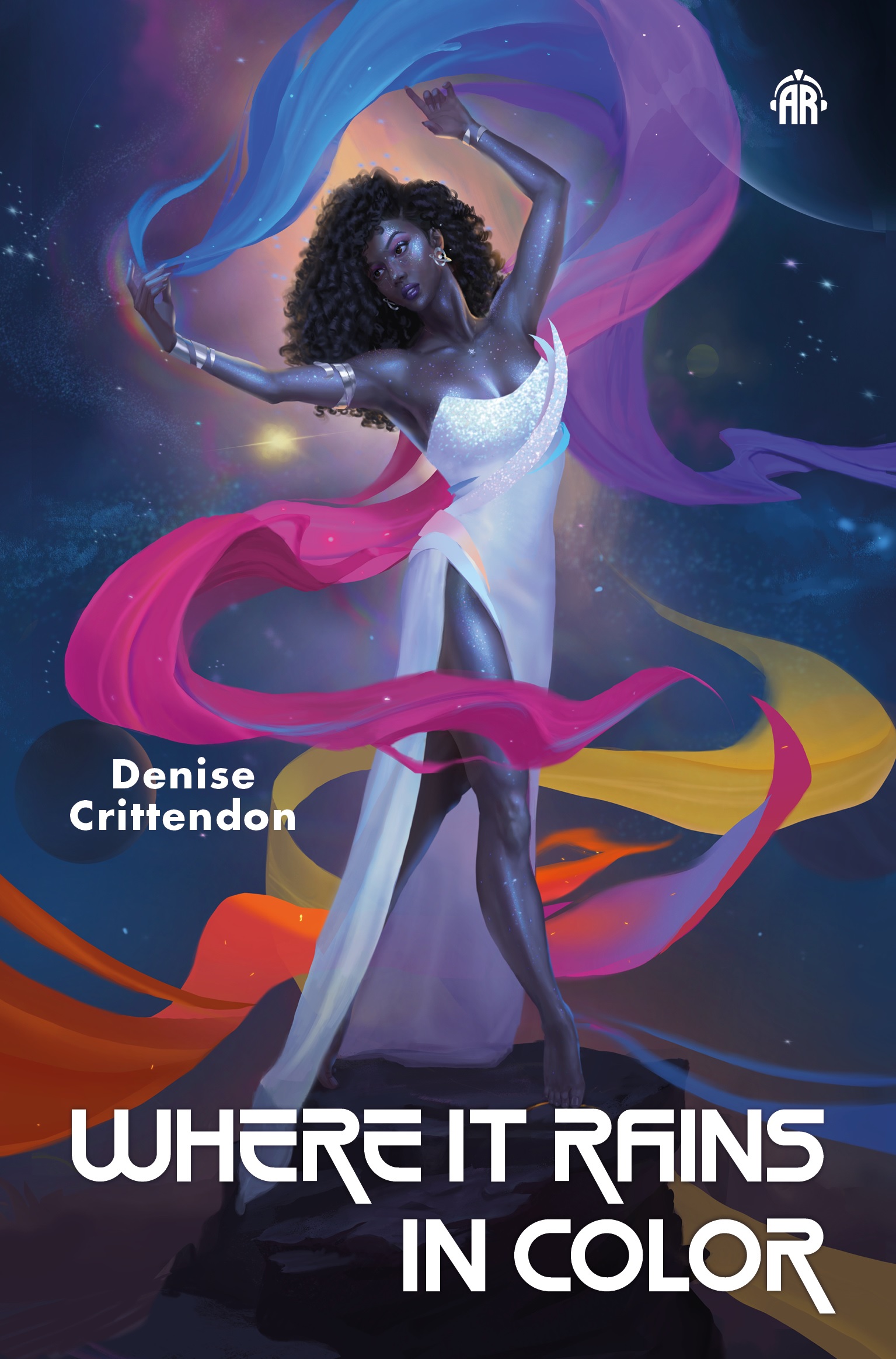 Book you're an evangelist for:
Book you're an evangelist for:
Dawn by Octavia Butler. When I finished reading it, I sat on my sofa and quietly stared for at least 15 minutes. That's just how real it felt. I'm always encouraging people to read Dawn, because it's shocking yet believable and shows just how visionary sci-fi can be.
Book you've bought for the cover:
I have never bought a book because of a cover. I'm more drawn in by creative titles. A few that come to mind are: An Unkindness of Ghosts by Rivers Solomon; Afro Puffs Are the Antennae of the Universe by Zig Zag Claybourne; The Hitchhiker's Guide to the Galaxy by Douglas Adams; The Diver's Clothes Lie Empty by Vendela Vida. With titles like this, I automatically assume the book is going to be profound or outrageously clever.
Book you hid from your parents:
I have never read anything so risqué that I had to hide it from my parents. My reading list has always been fairly lofty. In fact, my mother once asked me why I read such ponderous books. I think she might have appreciated it if I had lightened up a bit.
Book that changed your life:
I read across genres and have always been attracted to books on metaphysics and New Age spirituality. It's tough pinpointing which ones impacted me most, but I think I'd have to go with Spiritual Growth by Sanaya Roman. I read it so many times that most of the principles are now a natural part of how I think, cope with challenges and approach life in general.
Favorite line from a book:
I've fallen in love with countless book passages, quotes and metaphors. My absolute favorite is a wise and eloquent statement by Paul Atrieides, the young prodigy in Frank Herbert's Dune. However, the quote is far too long to include. So, I'll go with an excerpt from another classic passage from Dune: "Fear is the mind-killer. Fear is the little-death that brings total obliteration. I will face my fear."
Five books you'll never part with:
None! LOL. I recently moved across the country and could take only what would fit in my car and my cousin's van. I was fine with getting rid of stuff--until it came to my books. That was so hard. One thing's for sure: I'll never give up my Toni Morrison collection; Wild Seed by Octavia Butler; The Soul of an Octopus by Sy Montgomery; A Course in Miracles by Helen Schucman; or The Secret Life of Plants by Peter Tompkins and Christopher Bird, who explore the emotions and telepathic ability of plants.
Book you most want to read again for the first time:
Sula by Toni Morrison. Here's why: one afternoon, I needed to go to the mall to buy a purse. Before leaving, I grabbed a bite to eat and began reading for what I thought would be 20 minutes. One minute led into another and another and, when I looked up, the sun was going down. I had forgotten all about my errand. The book was so riveting that I actually finished it that night. That's definitely an experience I'd like to repeat. Ditto for One Hundred Years of Solitude by Gabriel García Márquez. It's a pretty thick book, but I remember looking forward to getting off work each day just so I could get back to it. When it ended, I was rather disappointed, because I wanted to read more.
Book Candy
Book Candy
"Closed circle mystery reads for fans of Glass Onion" were recommended by the New York Public Library.
Atlas Obscura explored the "Dr. Seuss House aka the Goose Creek Tower" in Talkeetna, Alaska.
Beezer, for example. Mental Floss highlighted "20 chucklesome slang terms from the 1910s."
Cultura Colectiva toured "Frankenstein's Castle: Mary Shelley's inspiration for her novel?"
Rediscover
Rediscover: Victor Navasky
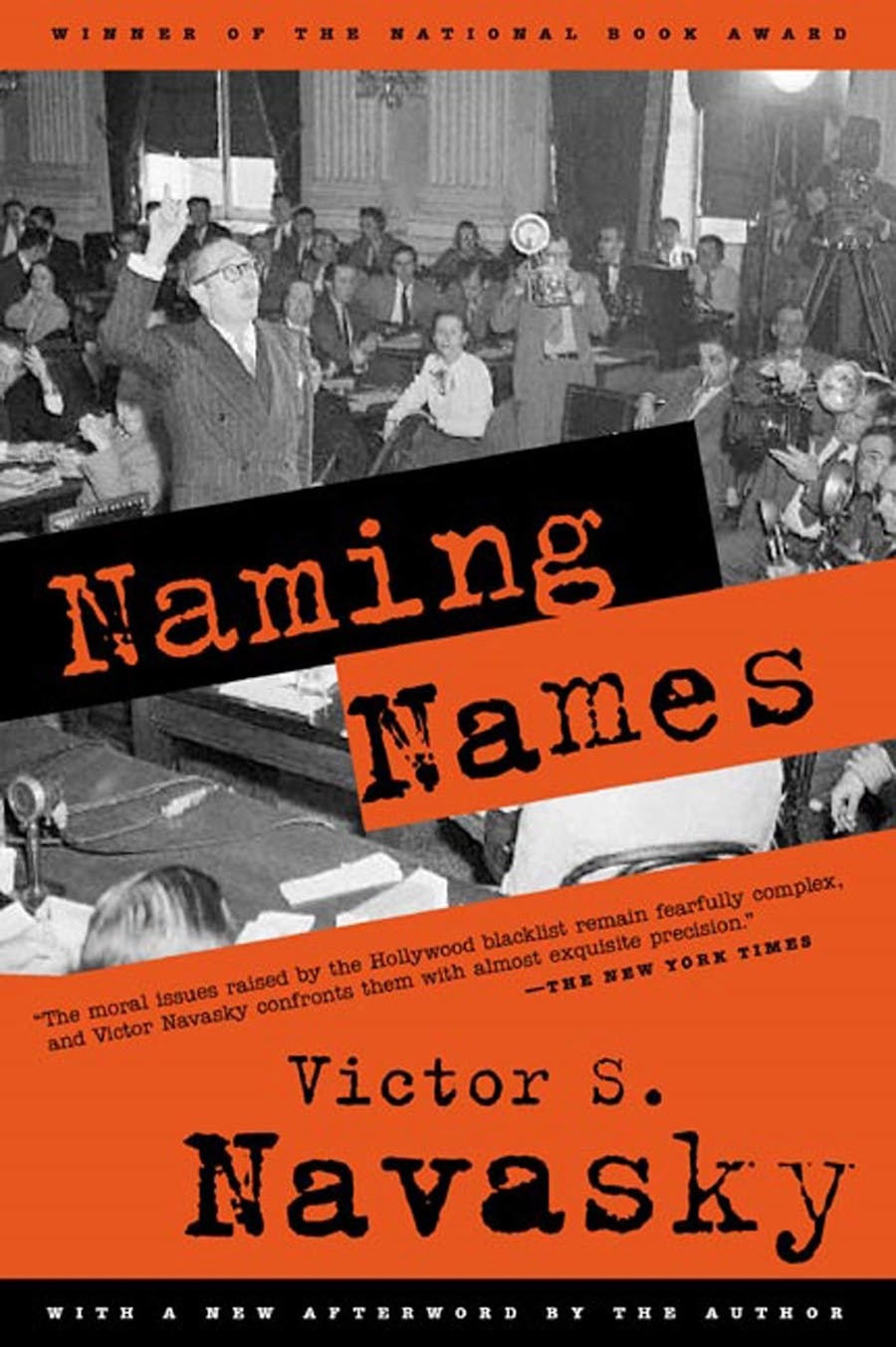 Victor Navasky, author and longtime head of the Nation, died on January 23 at age 90. Navasky's best-known book was Naming Names, which the New York Times called "a breakthrough chronicle of the Hollywood blacklisting era." Published in 1980, Naming Names won the National Book Award in 1982 for general nonfiction paperback. "The book focused on the ex-Communist writers, directors and producers who testified before the House Un-American Activities Committee and chose to inform on colleagues," the Times wrote. "Critics praised the book for its fairness and its compassion for people grappling with wrenching choices."
Victor Navasky, author and longtime head of the Nation, died on January 23 at age 90. Navasky's best-known book was Naming Names, which the New York Times called "a breakthrough chronicle of the Hollywood blacklisting era." Published in 1980, Naming Names won the National Book Award in 1982 for general nonfiction paperback. "The book focused on the ex-Communist writers, directors and producers who testified before the House Un-American Activities Committee and chose to inform on colleagues," the Times wrote. "Critics praised the book for its fairness and its compassion for people grappling with wrenching choices."
At the Nation, from 1978 to 2005, Navasky published and encouraged such writers as Alexander Cockburn, Christopher Hitchens, Calvin Trillin, Toni Morrison, Eric Foner, Katha Pollitt and Katrina vanden Heuvel. From 1972 to 1976, he wrote "In Cold Print," a monthly column on the publishing world for the New York Times Book Review. (He was an editor at the New York Times Magazine before he joined the Nation.)
Navasky was also at the center of a case that tested the principle of fair use of copyrighted material. In 1979, the Nation obtained an early copy of A Time to Heal, former President Gerald Ford's memoir, and printed extensive excerpts from it. Harper & Row sued for copyright infringement; the Nation argued it was fair use of the book. The Supreme Court sided with Harper & Row, and the Nation had to pay damages of $12,500.
Navasky's busy career included his early founding and editing of Monocle, a political satirical magazine; his stint at the New York Times; managing Ramsey Clark's 1974 losing campaign against Senator Jacob Javits; teaching at Columbia University; chairing the Columbia Journalism Review; and contributing to NPR's Marketplace. Among the many awards he won was the I.F. Stone Medal for Journalistic Independence from Harvard's Nieman Foundation for Journalism in 2017.
In addition to Naming Names, Navasky wrote Kennedy Justice (1971), about the Justice Department when Robert F. Kennedy was Attorney General in the early 1960s, and A Matter of Opinion (2005), which the AP called "a memoir and a passionate defense of free expression." A Matter of Opinion won the George K. Polk Book Award. His most recent book was The Art of Controversy: Political Cartoons and Their Enduring Power, which was published by Knopf in 2013. Naming Names is available in paperback from Hill and Wang.


